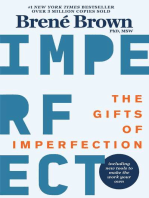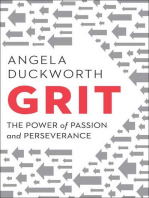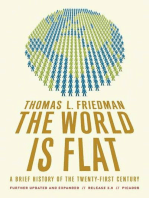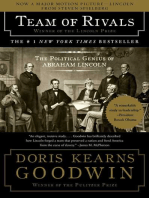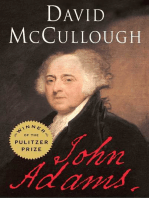Professional Documents
Culture Documents
Sentence Fragment 1
Sentence Fragment 1
Uploaded by
Quyết Nguyễn Mạnh0 ratings0% found this document useful (0 votes)
42 views6 pagessentence fragment , writing error
Original Title
Sentence fragment 1
Copyright
© © All Rights Reserved
Available Formats
PDF or read online from Scribd
Share this document
Did you find this document useful?
Is this content inappropriate?
Report this Documentsentence fragment , writing error
Copyright:
© All Rights Reserved
Available Formats
Download as PDF or read online from Scribd
Download as pdf
0 ratings0% found this document useful (0 votes)
42 views6 pagesSentence Fragment 1
Sentence Fragment 1
Uploaded by
Quyết Nguyễn Mạnhsentence fragment , writing error
Copyright:
© All Rights Reserved
Available Formats
Download as PDF or read online from Scribd
Download as pdf
You are on page 1of 6
START SMART
Tab 10: Editing for Grammar Conventions
This section will help you answer questions such as the following:
Rhetorical Knowledge
+ Are sentence fragments ever acceptable in any kind of writing? (51b)
Critical Thinking, Reading, and Writing
+ What's wrong with A student should enjoy their college experience?
How can I fix it without sounding sexist? (55a)
Processes
+ How can | recognize and fix sentence fragments when | edit? (51a—d)
+ Can my word processor's grammar checker help me edit for grammar
conventions? (51-56)
Knowledge of Conventions
+ When should | use lie or Jay? (54b)
+ Is it ever correct to say | feel good? (56b)
For a general introduction to writing outcomes, see te, pages 14-15.
When you edit, your purpose is to make the sentences in your text both clear
and strong. The preceding section of the handbook focused on editing for
clarity. This section focuses on editing for common grammatical problems.
A CHAPTER 51
Sentence Fragments
A sentence fragment is an incomplete sentence treated as if it were complete. It
may begin with a capital letter and end with a period, a question mark, or an
exclamation point, but it lacks one or more of the following:
+ A complete verb ~Vec
2
# A subject We
+ An independent clause
Although writers sometimes use them intentionally, fragments are rarely
appropriate for college assignments.
eo 00 % 0?
eo foe ee 8 Se Fok Oo 451
452 GRAMMAR CONVENTIONS Sentence Fragments
JV EERE Learn how to identity sentence fragments
Identify fragments in your work by asking three questions:
+ Do you see a complete verb? "fa
* Do you see a subject? Me
+ Do you see only a dependent clause?
4. Do you see a complete verb? A complete verb consists of a main verb
and helping verbs needed to indicate tense, person, and number. (See Chapter 54:
Problems with Verbs, pp. 470-79.) A group of related words without a complete
verb is a phrase fragment, not a sentence.
FRAGMENT The ancient Mayas were among the first to develop
many mathematical concepts. For example, the
concept of zero. (no verb]
SENTENCE The ancient Mayas were among the first to develop
many mathematical concepts. For example, they
developed the concept of zero.
2. Do you see a subject? The subject is the who or what that a sentence is
about. (See Tab 12: Basie Grammar Review, pp. 549-82.) A group of related words
without a subject or complete verb is a phrase fragment, not a sentence.
FRAGMENT The ancient Mayas were accomplished mathematicians.
Developed the concept of zero, for example. [no subject]
SENTENCE The ancient Mayas were accomplished mathematicians.
They developed the concept of zero, for example.
3. Do you see only a dependent clause? An independent clause has a sub-
ject and complete verb and can stand on its own as a sentence. A dependent or
subordinate clause also has a subject and complete verb, but it begins with a sub-
ordinating word such as although, because, that, ot which, Dependent clauses fune-
tion within sentences as modifiers or nouns, but they cannot stand as sentences
on their own. (See Tab 12: Basic Grammar Review, pp. 549-82.)
FRAGMENT The ancient Mayas deserve a place in the history of
mathematics. Because they were among the earliest people
10 develop the concept of zero.
SENTENCE = The ancient Mayas deserve a place in the history of
mathematics because they were among the earliest people 10
develop the concept of zero,
GRAMMAR CONVENTIONS Phrase fragment 453
6
Ei Learn how to edit sentence fragments AUS
You can repair sentence fragments by editing them in one of two ways:
« Transform them into sentences.
1
> — Many people feel threatened by globalization. Becaug-they
think it will undermine their cultural traditions.
* Attach them to a nearby independent clause.
beca
> Many people feel threatened by globalization/ Because they
think it will undermine their cultural traditions.
Your solution is a stylistic decision. Sometimes one approach may be clearly
preferable, and sometimes both are effective.
EGE connect a phrase fragment to another sentence, or
add the missing elements.
Often unintentional fragments are phrases—word groups that lack a subject or
a complete verb or both and usually function as modifiers or nouns.
4. Watching for verbals Phrase fragments frequently begin with verbals—
words derived from verbs, such as putting or 10 put. They do not change form to
reflect tense and number. (For more on verbals, see pp. 576-77.)
FRAGMENT That summer, we had the time of our lives. Swimming in
the mountain lake each day and exploring the nearby woods.
One way to fix this fragment is to transform it into an independent clause with
its own subject and verb.
We owam
> That summer, we had the time of our lives. Swimming in the
lored
mountain lake each day and exploring the nearby woods.
454 51C_— GraMmar CONVENTIONS Sentence Fragments
DENTIFY AND EDIT 7 >»
fi
Sentence Fragments “3
@ 1 vw you see a complete verb?
Yes
No > FRAGMENT
FRAGMENT For example, the concept of zero.
subj verb
SENTENCE For example, they were among the first to develop the
concept of zero.
@ 2 vw you see a subject?
Yes
No > FRAGMENT
FRAGMENT Developed the concept of zero, for example.
subj verb
Se They developed the concept of zero, for example.
v
@ 3. doyou see only a dependent clause?
Ni
YES > FRAGMENT
FRAGMENT Because they were among the earliest people to
develop the concept of zero.
SENTENCE The Mayas deserve a place in the history of
mathematics because they were among the earliest
people to develop the concept of zero.
walt
Ko that the two -ing verbals in the fragment need to be changed to keep the
phrases in the new sentence parallel. (For more on parallelism, see Tab 9: Editing
‘for Clarity, pp. 401-49.)
The fragment can also be attached to the part of the preceding sentence
that it modifies (in this case, the time of our lives).
GRAMMAR CONVENTIONS Phrase fragment
-— {he EVOLVING SITUATION
Intentional Fragments
Advertisers often use attention-getting fragments: “Hot deal! Big
savings! Because you're worth it.” In everyday life, we often speak in
fragments: “You okay?” “Fine.” As a result, people who write fiction
and drama use fragments to create realistic dialogue, and people who
write popular nonfiction often use them for emphasis and variety. Keep
in mind, however, that advertising, literary writing, and college writing
have different contexts and purposes. In formal writing, use intentional
sentence fragments sparingly, if at all
» ng Pa
> That summer, we had the time of our lives, Swimming in the kh
mountain lake each day and exploring the nearby woods.
2. Watching for preposition fragments Phrase fragments can also begin
with one-word prepositions such as as, at, by; for, from, in, of, on, or to. Attach
these fragments to a nearby sentence.
> Impressionist painters often depicted their subjects in everyday
vat
situations/ At a restaurant, perhaps, or by the seashore.
3. Watching for transitional phrases Some fragments start with two- or
three-word prepositions that function as transitions, such as as well as, as com-
pared with, or in addition to.
> For the past sixty-five years, the growth in consumer spending has
+i
been both steep and steady/ tn contrast with the growth in gross
domestic product (GDP), which fluctuated significantly between 1929
and 1950.
4. Watching for words and phrases that introduce examples Check
word groups beginning with expressions that introduce examples—such as for
example ot such as. If they ate fragments, edit to make them into sentences, or
attach them to an independent clause.
> Elizabeth | of England faced many dangers as a princess. For
‘che fell
example, falling out of favor with her sister, Queen Mary, and
woe
being imprisoned in the Tower of London.
456 GRAMMAR CONVENTIONS Sentence Fragments
5. Watching for appositives An appositive is a noun or noun phrase that
renames a noun or pronoun.
> In 1965, Lyndon Johnson increased the number of troops in Vietnam/ A
former French colony in Southeast Asia.
6. Watching for fragments that consist of lists You can connect a list to
the preceding sentence using a colon or a dash.
> In the 1930s, three great band leaders helped popularize jazz/,
Louis Armstrong, Benny Goodman, and Duke Ellington.
7. Watching for fragments that are parts of compound predicates A com-
pound predicate is made up of at least two verbs as well as their objects and modifiers,
connected by a coordinating conjunction such as and, but, or or. The parts of a com-
pound predicate have the same subject and should be in one sentence.
> The group gathered at dawn at the base of the moun
assembled their gear in preparation for the morning's
EERE connect fragments that begin with a subordinating
word (although, because, since, even though) to
another sentence, or eliminate the subordinating word
Fragments that begin with a subordinating word can usually be attached to a
nearby independent clause.
> None of the thirty-three subjects indicated any concern about the
ven
amount or kind of fruit the institution served, Even though all of
qh, Ve them identified diet as an important issue for those with diabetes.
a
Punctuation tip: A comma usually follows a dependent clause that
begins a sentence. If the clause appears at the end of a sentence,
it is usually not preceded by a comma unless it is a contrasting
thought. (See Tab 11: Editing for Correctness, p. 498.)
It is sometimes better to transform such a fragment into a complete sentence
by deleting the subordinating word.
> The harmony of our group was disrupted in two ways.
Members |
When-members either disagreed about priorities or advocated
different political strategies.
You might also like
- The Subtle Art of Not Giving a F*ck: A Counterintuitive Approach to Living a Good LifeFrom EverandThe Subtle Art of Not Giving a F*ck: A Counterintuitive Approach to Living a Good LifeRating: 4 out of 5 stars4/5 (5838)
- The Gifts of Imperfection: Let Go of Who You Think You're Supposed to Be and Embrace Who You AreFrom EverandThe Gifts of Imperfection: Let Go of Who You Think You're Supposed to Be and Embrace Who You AreRating: 4 out of 5 stars4/5 (1093)
- Never Split the Difference: Negotiating As If Your Life Depended On ItFrom EverandNever Split the Difference: Negotiating As If Your Life Depended On ItRating: 4.5 out of 5 stars4.5/5 (862)
- Grit: The Power of Passion and PerseveranceFrom EverandGrit: The Power of Passion and PerseveranceRating: 4 out of 5 stars4/5 (591)
- Hidden Figures: The American Dream and the Untold Story of the Black Women Mathematicians Who Helped Win the Space RaceFrom EverandHidden Figures: The American Dream and the Untold Story of the Black Women Mathematicians Who Helped Win the Space RaceRating: 4 out of 5 stars4/5 (903)
- Shoe Dog: A Memoir by the Creator of NikeFrom EverandShoe Dog: A Memoir by the Creator of NikeRating: 4.5 out of 5 stars4.5/5 (542)
- The Hard Thing About Hard Things: Building a Business When There Are No Easy AnswersFrom EverandThe Hard Thing About Hard Things: Building a Business When There Are No Easy AnswersRating: 4.5 out of 5 stars4.5/5 (351)
- Elon Musk: Tesla, SpaceX, and the Quest for a Fantastic FutureFrom EverandElon Musk: Tesla, SpaceX, and the Quest for a Fantastic FutureRating: 4.5 out of 5 stars4.5/5 (474)
- Her Body and Other Parties: StoriesFrom EverandHer Body and Other Parties: StoriesRating: 4 out of 5 stars4/5 (824)
- The Sympathizer: A Novel (Pulitzer Prize for Fiction)From EverandThe Sympathizer: A Novel (Pulitzer Prize for Fiction)Rating: 4.5 out of 5 stars4.5/5 (122)
- The Emperor of All Maladies: A Biography of CancerFrom EverandThe Emperor of All Maladies: A Biography of CancerRating: 4.5 out of 5 stars4.5/5 (271)
- The Little Book of Hygge: Danish Secrets to Happy LivingFrom EverandThe Little Book of Hygge: Danish Secrets to Happy LivingRating: 3.5 out of 5 stars3.5/5 (405)
- The World Is Flat 3.0: A Brief History of the Twenty-first CenturyFrom EverandThe World Is Flat 3.0: A Brief History of the Twenty-first CenturyRating: 3.5 out of 5 stars3.5/5 (2259)
- The Yellow House: A Memoir (2019 National Book Award Winner)From EverandThe Yellow House: A Memoir (2019 National Book Award Winner)Rating: 4 out of 5 stars4/5 (98)
- Devil in the Grove: Thurgood Marshall, the Groveland Boys, and the Dawn of a New AmericaFrom EverandDevil in the Grove: Thurgood Marshall, the Groveland Boys, and the Dawn of a New AmericaRating: 4.5 out of 5 stars4.5/5 (268)
- A Heartbreaking Work Of Staggering Genius: A Memoir Based on a True StoryFrom EverandA Heartbreaking Work Of Staggering Genius: A Memoir Based on a True StoryRating: 3.5 out of 5 stars3.5/5 (232)
- Team of Rivals: The Political Genius of Abraham LincolnFrom EverandTeam of Rivals: The Political Genius of Abraham LincolnRating: 4.5 out of 5 stars4.5/5 (234)
- On Fire: The (Burning) Case for a Green New DealFrom EverandOn Fire: The (Burning) Case for a Green New DealRating: 4 out of 5 stars4/5 (74)
- Niagara AX Developer GuideDocument133 pagesNiagara AX Developer GuideQuyết Nguyễn MạnhNo ratings yet
- The Unwinding: An Inner History of the New AmericaFrom EverandThe Unwinding: An Inner History of the New AmericaRating: 4 out of 5 stars4/5 (45)
- Web 8025 UDocument4 pagesWeb 8025 UQuyết Nguyễn MạnhNo ratings yet
- 204 Web8000Document1 page204 Web8000Quyết Nguyễn MạnhNo ratings yet
- Carbon Monoxide Transmitters: Current/Voltage Selectable Output, 200 PPM RangeDocument1 pageCarbon Monoxide Transmitters: Current/Voltage Selectable Output, 200 PPM RangeQuyết Nguyễn MạnhNo ratings yet
- TF428WNM/U: Communicating Fan Coil ThermostatDocument8 pagesTF428WNM/U: Communicating Fan Coil ThermostatQuyết Nguyễn MạnhNo ratings yet
- Ultrasonic Diffuse, Analogue and Digital Output Types UA30CAD...... TIDocument4 pagesUltrasonic Diffuse, Analogue and Digital Output Types UA30CAD...... TIQuyết Nguyễn MạnhNo ratings yet
- T7460A, B, C, D, E, F: FeaturesDocument6 pagesT7460A, B, C, D, E, F: FeaturesQuyết Nguyễn MạnhNo ratings yet
- Product Data: Gage Pressure TransmittersDocument2 pagesProduct Data: Gage Pressure TransmittersQuyết Nguyễn MạnhNo ratings yet
- Data JohnsonControlDocument233 pagesData JohnsonControlQuyết Nguyễn MạnhNo ratings yet
- Bac Net MSTPDocument32 pagesBac Net MSTPQuyết Nguyễn MạnhNo ratings yet
- Lon Spyder NV Fail Detect Tech TipDocument2 pagesLon Spyder NV Fail Detect Tech TipQuyết Nguyễn MạnhNo ratings yet

